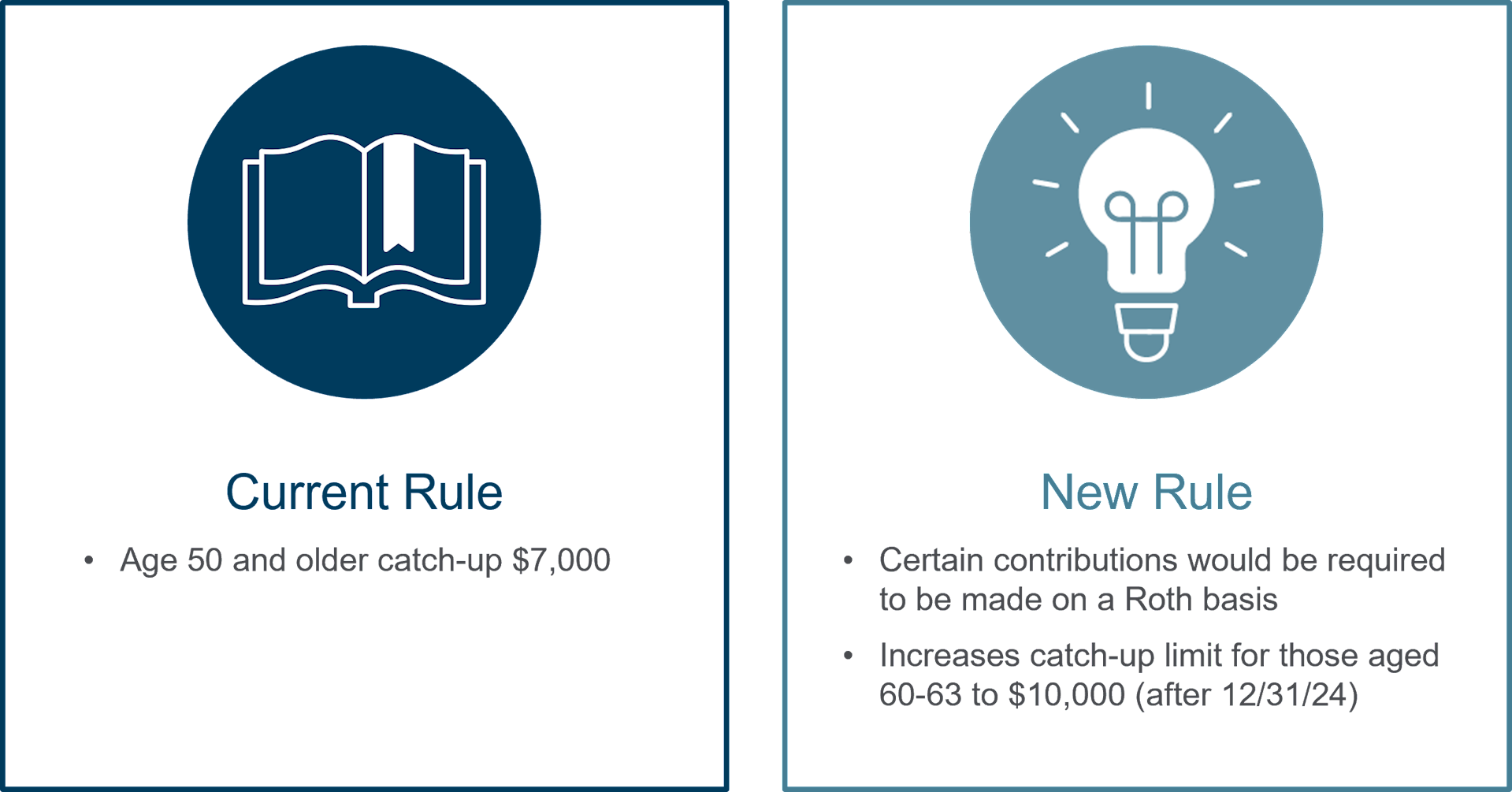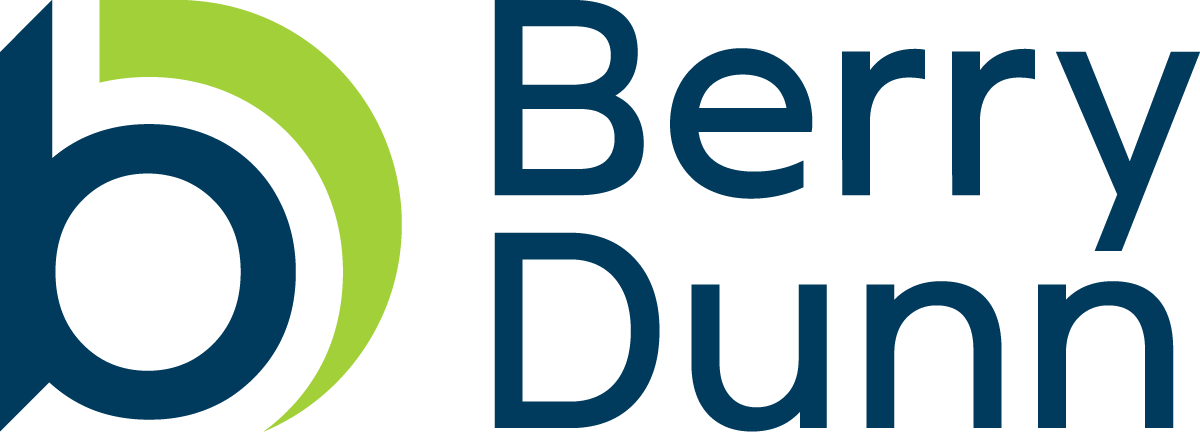Catch-up Contributions - Impacts of the SECURE 2.0 Act

In December 2022, Congress passed the Securing a Strong Retirement Act of 2022, commonly referred to as the SECURE 2.0 Act.
The SECURE 2.0 Act includes a multitude of provisions, many of which affect employer-sponsored retirement plans and individual retirement accounts. In this article, we here at BerryDunn want to specifically focus on changes to catch-up contributions for employer-sponsored retirement plans.
Catch-up contribution parameters
Currently, salary deferral catch-up contributions are available to participants who are age 50 or older (regardless of when they turn 50 during the calendar year). For 2023, the catch-up contribution limit is $7,500; however, this amount changes annually as it is indexed to inflation. This has historically been a non-issue for plans, payroll providers, and recordkeepers, as payroll provider and recordkeeper portals have been set up to allow contributions over the normal salary deferral limit (currently $22,500) for those participants who are over age 50. These catch-up contributions have traditionally been coded the same as a participant’s regular deferrals—either traditional or Roth.
Effective dates: Roth catch-up contributions requirement
Effective January 1, 2024, catch-up contributions will be required to be made on a Roth basis for participants with wages greater than $145,000 (indexed annually for inflation) in the prior year. However, on Friday, August 25, 2023, the IRS issued Notice 2023-62, which provides a two-year administrative transition period to implement the new catch-up contribution provisions.
Specifically, until taxable years beginning after December 31, 2025, catch-up contributions to participants with wages greater than $145,000 in the prior year will not need to be designated as Roth contributions.
Note that the $145,000 limit is determined by looking at wages for social security tax purposes. That may or may not be the same definition that is used by a plan for other purposes (e.g., salary deferral and employer contributions). This may create an administrative burden for payroll providers and recordkeepers as these vendors will need to be able to differentiate between employees under and over this compensation threshold. Furthermore, for those above the threshold, software and systems will need to be set up to help ensure any catch-up contributions are properly coded as Roth contributions, for payroll and retirement plan reporting. Employees with wages of $145,000 or less may still elect to have Roth catch-up contributions, if allowed by the plan documents.
Recommendations
We recommend reaching out to payroll providers and recordkeepers today to see how they plan to approach compliance with the new provision. These conversations should not be independent of one another—it will take a concerted effort amongst plan management, payroll providers, and recordkeepers to help ensure compliance.
NOTE: There is one other change on the horizon for catch-up contributions. Beginning in 2025, the SECURE 2.0 Act creates an additional “special” catch-up limit for employees who are ages 60 to 63. This special catch-up limit will be the greater of $10,000 or 150% of the regular catch-up amount in effect for the year. This amount will also be indexed for inflation annually.

Additional changes effective in 2024
- Elimination of Required Minimum Distributions (RMDs) for Roth 401(k) and 403(b) plans
- RMDs for surviving spouses
- Student loan repayments matching contributions
- Emergency savings accounts
- Optional Rothification of catch-up contributions for high earners (as discussed above, this will be mandatory in 2026)
- Higher forced rollover limit
- Retroactively amending plan to increase benefits for prior plan year
- Waiver of early withdrawal penalties for certain distributions
- Permanent safe harbor for correcting auto-enrollment and auto-escalation failures
- Uniform rollover forms
- 403(b) hardship distributions conform to 401(k) rules
- Starter 401(k) or 403(b) plans
- Separate top-heavy tests allowed
- SIMPLE plan updates
- Reform of family attribution rules
- Improved defined benefit plan annual funding notices
- Indexing individual retirement account (IRA) catch-up limit
- Section 529 rollovers
- Retirement savings lost and found
For more information on these changes and others going into effect in 2025, read the previous article on the SECURE 2.0 Act.
